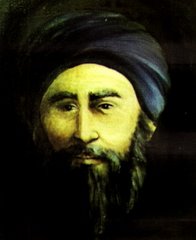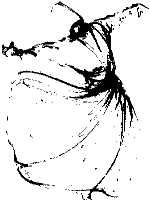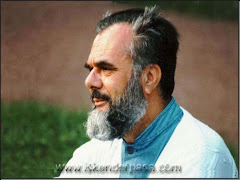The image of Usama bin Ladin (UBL) is one that strikes fear into the hearts of Americans and other Westerners.
UBL and his organisation were responsible for carrying out some of the most daring and destructive attacks on the United States. UBL represents the symbol of terror, a symbol so powerful that the very mention of the name “Usama” sebds shivers down the spine of Muslims and non-Muslims alike.
Yet the name “Usama” has not always been synonymous with terrorism, just as names like “Ariel” and “Adolf” haven’t always been synonymous with genocide.
And whilst UBL may claim his type of unconventional warfare is a form of “jihad”, this term has traditionally not been associated with terror.
Who was Usama?
Usama is the name of a child, one of the favourite children of the Prophet Muhammad. To understand the historical Usama, we must understand his parents and their role in early Islamic history.
The Prophet lived some 63 years. His entire life was witnessed by an anonymous slave woman named Barakah (literally “blessing”).
The Prophet’s Mother, Amina, inherited Barakah and appointed her to be her personal assistant. Barakah was fortunate to be a servant to the most noble and kind of Arab aristocratic families. The Banu Hashim were from the purest of Arab stock and direct descendants of the Prophet Abraham and his son Ishmael.
Amina was a woman of noble lineage from one of the ruling families of Yathrib. She married into the Banu Hashim family, and her husband was the noble and handsome Abdullah. Some 2 weeks into the marriage, after falling pregnant, Amina was forced to undergo the trauma of seeing her husband undertake a risky trade journey to Syria. He was never to return, and was buried in Yathrib.
Amina gave birth to a baby boy who was named Muhammad. Barakah acted as mid-wife and helped nurse the young boy. She was with the boy throughout his life.
At age 7, the boy accompanied his mother and Barakah to Yathrib where she was to visit her family and complete her grieving process. Each day, Barakah would look after the boy while her mistress Amina would weep at the grave of her husband.
On the return journey, Amina succumbed to a fever. She died on the outskirts of a small village. Her last words to Barakah were:
“O Barakah, I shall depart from this world shortly. I leave behind my son Muhammad in your care. He lost his father while he was in my abdomen. Here he is now, losing his mother under his very eyes. Be a mother to him, Barakah. And don’t ever leave him.”
Barakah and the young Muhammad buried Amina in the sands of Arabia. Barakah never left Muhammad’s side. She later told Muhammad’s first wife Khadija: “I never left him and he never left me.”
When the young Muhammad grew up, he was gifted by his wife with a slave named Zayd. He was a young Arab boy was captured in a tribal war and sold in the slave market at Makkah. Zayd was adopted by Muhammad.
There is a famous story of Zayd’s father who searches across Arabia to find his kidnapped son. He finally hears of Zayd living in captivity and under the care of Muhammad.
The father approached his son. It was an emotional reunion. He had not seen his son for over 2 decades. The father offered Muhammad a handsome sum to buy his son’s freedom. Muhammad refused to accept a sum and left the choice to Zayd.
Islamic history reports Zayd’s response to his father’s offer as follows:
“I shall never leave this man. He treated me nobly, as a father would treat his son. Not a single day have I felt that I am a slave. He looked after me. How can I leave him and go with you? I will never leave him!”
Thereupon Muhammad publicly declared Zayd to be a free man and adopted him as a son. Zayd became known as Zayd bin Muhammad.
Both Barakah and Zayd were part of the household of Muhammad. Zayd was a handsome man in his 20’s. Barakah was an elderly sickly woman in her 50’s. Under the blessing of Muhammad, they married and had a son named Usama. This young child was a favourite of Muhammad. He was often found jumping on the back of the Prophet who was prostrating in prayer. Usama often played with the other young boys of the Prophet’s household, Hasan and Husayn.
Because of Muhammad’s love for the young Usama, the more senior disciples of Muhammad often referred to Usama as “the beloved son of the beloved”.
Usama was the product of a union between 2 people whose lives were transformed by the kindness and mercy of Muhammad. Usama eventually echoed that kindness and mercy of his spiritual preceptor and was known for his tender-heartedness and compassion toward the poor and destitute.
What is Jihad?
In the aftermath of the London bombings on 7/7, both the Prime Minister and Treasurer were reported as saying that jihad has no place in Australian society. Both can be forgiven for making such statements given the gross misunderstanding of the term in the broader community.
Jihad is a term frequently misused and abused by persons from all different faiths. Before his arrest, the Algerian man from Melbourne named “Abu Bakr” praised UBL and supporting a form of jihad which some of us might regard as terrorism.
So what is jihad? Is it war? Does it refer to killing civilians? Is it suicide bombing?
The term “jihad” is an Arabic word which literally means to struggle or strive. It is related to the term “ijtihad”, a legislative process which Canadian Irshad Manji claims to have revived, if not invented.
Both ijtihad and jihad are forms of struggle. Ijtihad refers to a struggle for finding solutions to new problems using existing sources of Islamic law. It is a process which guarantees the dynamism of the development of Islamic law. Notwithstanding Ms Manji’s claims, she is not the first writer to discuss the process of ijtihad. Indeed, it has been a common theme of Islamic legal scholarship for the past 14 centuries.
Indeed, it is by a process of warped ijtihad that UBL has claimed that the classical rules of armed jihad can be changed. The classical scholars are agreed on certain pre-conditions for an armed jihad. These include:
1. The existence of an Islamic state ruled by a properly constituted caliphate.
2. A formal declaration of war by the caliph.
3. An act of aggression on the Islamic state.
4. No women, children or other non-combatants are to be targeted.
The last of these rules is particularly regarded as being non-negotiable. As such, the September 11 attacks as well as suicide attacks targeted at individuals would be regarded as not falling within the boundaries of jihad as agreed to by Islamic jurists.
It is only by a process of what one may call “creative ijtihad”, common to both Irshad Manji and UBL, that one could argue jihad incorporates terrorism and attacks on civilian targets.
© Irfan Yusuf 2005











1 comment:
Nice little article Irf, I wonder how long before it is pounced upon though.
Post a Comment